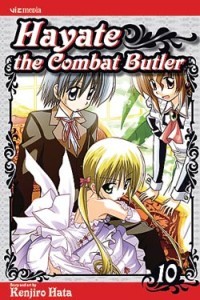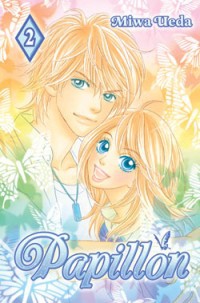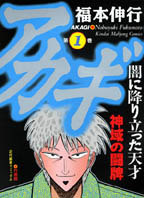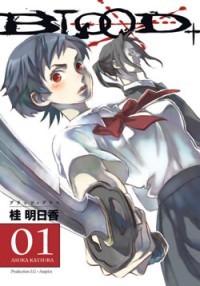RIGHT TURN ONLY!!
My Butler Can Beat Up Your Butler
by Carlo Santos,

In a world like ours, where society is collapsing left and right, where unemployment has become a frightening inevitability, where murder-suicide becomes the last option for getting out of debt, we begin to wonder if there is any stability, and sign of normalcy left that maybe someday we can return to our ordinary lives.
That is why I say this:
Christopher Hart is putting out another how-to-draw book.
Some things truly never change...
AI YORI AOSHI

Vols. 1-3 Collection
(by Kou Fumizuki, Tokyopop, $14.99)
FROM THE BACK COVER:
"Just as Kaoru Hanabishi resigns himself to going through his college years alone, he runs into the childhood sweetheart he hasn't seen since leaving home. Her name is Aoi Sakuraba ... and she has come to be his wife!"
EVIDENCE FOR:
There's a lot of 90's manga art that ages badly—but not this one, which at times is still as cute and heartwarming as the day it was made. All it takes is the ability to set up a beautiful moment with clean lines and straightforward imagery: the instant Kaoru and Aoi first recognize their destiny to be together, or when they reveal the Christmas presents they bought for each other, or just the sheer emotional impact of saying "I love you" for the first time. Every panel gets plenty of room to breathe, and there's never any rushing in critical scenes like these. Because love can be so simple and so inexpressible, it should also be no surprise that the best scenes are the ones with little to no dialogue. At the same time, however, flashbacks of Kaoru's grim childhood provide a darker counterpoint to the story's uplifting tone—resulting in a more emotionally complex texture than one may have first thought. The genre may have moved on in the past decade or so, along with the standards of aesthetics and character design, but there's something timeless about the purity of true love.
EVIDENCE AGAINST:
As a historical blueprint for many other harem series, this three-volume set wastes little time in laying the groundwork for everything we find annoying about the genre. A lead male who has the girl of his dreams drop into his lap? Yeah, we got that. Several other girls with impossibly well-endowed figures and gravure-idol looks? That's all covered, along with a token foreigner just to be funny. Pointless episodes that add nothing to the main couple's development other than "we went on a camping trip" or "we went to an amusement park"? Oh, there's plenty of those, and having them all chunked into a 600-page block just makes it more nauseating. The second volume is probably the worst offender, as that's when we get to meet all of Kaoru's irritating college friends (how does such a bland guy get to befriend so many desirable women, anyway?) and then—by various strokes of luck—ends up moving into a mansion with the girls. The methodical plodding through the year is pretty blatant, too: summer vacation and school festival and Christmas and New Year's and Valentine's and goodness just come up with something original for once.
FINAL VERDICT:
Might be worth it for the nostalgic value, and it has some genuinely sweet moments, but this is a completely ordinary C if there ever was one.
HAYATE THE COMBAT BUTLER

Vol. 10
(by Kenjirō Hata, Viz Media, $9.99)
FROM THE BACK COVER:
"Since the tender age of nine, Hayate Ayasaki has busted his behind at various part-time jobs to support his degenerate gambler parents. And how do they repay their son's selfless generosity? By selling his organs to the yakuza to cover their debts! But fate throws Hayate a bone ... sort of.
Final exams are close at hand and Hayate can no longer afford to ignore his studies, but if he's hitting the books, who will keep the Sanzenin mansion spick-and-span? Anticipating just such an occasion, head butler Klaus arranges for Mecha Butler No. 13 to take Hayte's place. Fully automated and machine-engineered to domestic perfection, this new cybernetic manservant boasts a wide variety of dazzling features and capabilities, from performing soothing back rubs to giving Nagi candid advice on her latest manga. Is Hayate truly this easy to replace?"
EVIDENCE FOR:
The over-the-top, too-good-to-be-true Mecha Butler is just one of many humorous flourishes that proves a long-standing principle: Hayate is at its best when it completely violates all logic. In fact, the pinnacle of this volume is not the arrival of Hayate's insidious robot clone, but the 100th chapter special where Nagi finally reveals her artistic masterpiece "Magical Destroy." Told in just a few sketchily drawn pages, Nagi's magnum opus is a brilliant (and often absurd) tribute to all the really dumb things wannabe manga-ka do. ("Dear ANN, I have a great idea for a 104-episode anime about ninja zombie elves, how do I contact Japan to have it made?") Other rapid-fire highlights include an arranged-marriage interview gone horribly wrong, a foray into amateur filmmaking with the "Your Tube" club (well, not really filmmaking; they just do the outtakes) and finally—since it was about time she got some attention—Nagi sneaking a peek in Hayate's room. With so many characters and so many possibilities, you never know where the wackiness will come from next.
EVIDENCE AGAINST:
Truth be told, Hayate's short bursts of humor are better enjoyed in weekly serialization, rather than in 180-page blocks, where it feels more like a stomach-churning overdose of empty calories. This is the very epitome of hit-and-miss comedy: something's going to be funny some of the time, but there are also a lot of useless gags that just fly off into nowhere. (The armed robbery situation goes on entirely too long...) With all this jumping around between silly escapades and side characters, the story never gets any sense of focus, and when it does try to go somewhere important—like addressing the growing bond between Hayate and Hinagiku—it doesn't feel genuine at all. Come on, we're supposed to believe that those two are having "a moment" when everything else they do involves lighthearted lunacy? The art isn't very convincing either, as it's mostly there to tell us who the characters are and to provide a framework between all the lines of dialogue. For a gag series, this really falls short on the visual humor (aside from the "Magical Destroy" parody—and that's meant to look bad on purpose).
FINAL VERDICT:
Sorry, but being occasionally funny just isn't going to cut it. Anyone who just throws around scattershot ideas is going to get exactly what they deserve: a C-.
OISHINBO

Vol. 1: Japanese Cuisine
(by Tetsu Kariya and Akira Hanasaki, Viz Media, $12.99)
FROM THE BACK COVER:
"As part of the celebration for its 100th anniversary, the publishers of the Tôzai News have commissioned the creation of the "Ultimate Menu," a model meal embodying the pinnacle of Japanese cuisine. This all-important task has been entrusted to journalist Yamaoka Shirô, an inveterate cynic who possess zero initiative—but also an incredibly refined palate and an encyclopedic knowledge of food.
Each volume of Oishinbo follows Yamaoka and his colleages through another adventure on their quest for the Ultimate Menu. Now, the highlights from the hundred-plus volume series have been selected and compiled into À la Carte editions: bite-sized chunks of story arranged by subject that add up to a full-course manga meal!"
EVIDENCE FOR:
Whether you're a connoisseur of fine food or fine comics (or both), it's clear to see that Oishinbo appeals to the highest principles of one's geek nature: to acquire as much knowledge as possible about a specialized subject. And in that sense, the series completely surpasses any other food manga released in North America—sure, Yakitate!! Japan might be buckets of fun with its elaborate bread-preparing techniques, but this one lays down basic guidelines that a normal person can use in the kitchen. Like the finer points of wielding a knife. Or how to make the perfect batch of steamed rice. Or why a cook should never, ever smoke. Add to that an intensively researched glossary, and clearly this volume cuts no corners in explaining the Japanese-ness of Japanese cuisine. At that same time, though, it also succeeds as an character-driven story: Yamaoka's bitter rivalry with his father is a powerful undercurrent running through each chapter, and unlike the average cooking-contest prodigy, Yamaoka actually loses from time to time. He's a brilliant foodie, but he's still human—a quality that makes the series so likeable and down-to-earth.
EVIDENCE AGAINST:
The "À la Carte" format—choosing certain chapters based on a specific theme—may be great for bringing out the non-fiction aspect, but it also cripples the story side. The relationship between Yamaoka and his dad is only briefly explained in a flashback, so most of the time it just looks like an angry old man and an angry young man yelling at each other melodramatically. Yamaoka's job duties at the newspaper also get skimmed over; not only do we barely see him doing any actual writing, but they never even tell us how he got the job in the first place. And it only gets worse when trying to figure out the supporting cast: they just drift in and out of each chapter as necessary, with little to no development. (Although at some point Yamaoka marries his cute co-worker. Or something.) For some, however, the ultimate deterrent might be the unsophisticated old-school art. This series may be a Japanese classic, but with today's audiences so acclimated to a modern style, do you think they'll be impressed by inconsistently drawn faces and rudimentary linework?
FINAL VERDICT:
If graded according to the traditional standards of "story and art," this one falls well short, but the sheer informative aspect lifts it up enough to a B.
OTOMEN

Vol. 1
(by Aya Kanno, Viz Media, $8.99)
FROM THE BACK COVER:
"Asuka Masamune is a guy who loves girly things—sewing, knitting, making cute stuffed animals and reading shôjo comics. But in a world where boys are expected to act manly, Asuka must hide his beloved hobbies and play the part of a masculine jock instead. Ryo Miyakozuka, on the other hand, is a girl who can't sew or bake a cake to save her life. Asuka finds himself drawn to Ryo, but she likes only the manliest of men! Can Asuka ever show his true self to anyone, much less to the girl that he's falling for?"
EVIDENCE FOR:
Usually, when a manga starts getting over-the-top and ridiculous, that's when the eye-rolling starts ... but here that just makes it better and better. Otomen shows No Mercy in skewering traditional gender roles, especially in the way the media and entertainment industries keep trying to market it to us (the parodical Hana to Mame and Shonen Junk magazines are absolutely hilarious). The best part is that Aya Kanno totally has the artistic mettle to pull it off—her fake shôjo pages are a laugh riot of googly eyes, blinding sparkly effects and more screentones than Arina Tanemura and Matsuri Hino combined. Of course, just to offset that, she rattles off some fantastic "manly action" parody scenes as well. But the real heart of this series, of course, is in the characters; it's amazing how something as simple as a gender-stereotype mismatch makes for such dynamic (and often amusing) interaction between Asuka and Ryo. Then there's playboy rival Juta, who has a wacky secret of his own, and whose constant meddling leads to the added bonus of Asuka/Juta homoerotic subtext. Will the hilarity ever stop?!
EVIDENCE AGAINST:
Oh, the hilarity stops ... plenty of times. See, here's the thing: Aya Kanno comes up with plenty of laugh-out-loud moments, but the story actually stringing them together is paper-thin. Coming up with funny characters is all fine and good, but when the only romantic progression between them is going to a series of stereotypical hangout locations—the school rooftop, your sweetheart's house, a movie, a theme park—the charm is quickly lost. In short, Asuka and Ryo spend a lot of time together but the sparks never fly. Even the bizarre Asuka/Ryo/Juta friendship triangle has trouble getting off the ground; the first chapter makes it feel more like some uneasy third-wheel situation instead of the comedic polygon that it eventually turns into. And story execution isn't the only place where Kanno's weaknesses are revealed: the artwork is dreadfully boring when not immersed in parody sight-gags. Sure, the character designs are appealing, but perhaps a little too pleasant and cookie-cutter—and the same with those bland school and city backgrounds.
FINAL VERDICT:
Even if the story does chug along in a predictable way, the culturally aware, over-the-top humor more than makes up for it. This one gets a solid B+.
PAPILLON

Vol. 2
(by Miwa Ueda, Del Rey, $10.99)
FROM THE BACK COVER:
"Ageha has always lived in the shadow of her popular twin sister, Hana. But with the help of her eccentric and brilliant guidance counselor, Ryûsei, Ageha is turning her life around. Now she's confident and in control ... and falling for Ryûsei! Is Ryûsei really the right guy for Ageha?"
EVIDENCE FOR:
Say what you will about Papillon's frighteningly girly cover art, but beneath it lurks a series that has a lot more to say than the average fluffy romance. Most surprisingly, this volume turns to the subject of Ageha's troubled relationship with her mother—was she truly the unwanted twin, or was there a deeper reason that she was left to be raised by her grandmother? These chapters are at their most emotionally incisive when they explore the dimensions of a mother's (and daughter's) love. But the main storyline hasn't gone forgotten: the tug-of-war in Ageha's heart over her feelings for Ryûsei continues to intensify, culminating in a brilliantly executed last chapter. In between, there's time for comedic cuteness as well—watch Ageha try to babysit two rambunctious siblings! Endless amusement! Miwa Ueda's clean, stylish art puts the final touch to this up-and-down relationship drama: it's a world where all the characters are attractive, every scene flows effortlessly, and unlike most other artists in the genre, she doesn't try to kill your eyes with pointless visual clutter.
EVIDENCE AGAINST:
It's so tempting to turn to quick-and-easy clichés to generate instant drama—and unfortunately this volume gives in to the temptation far too often. The most obvious offender is the much-dreaded "near-fatal accident of a loved one"—sure, shove your mother in front of a passing car and that'll turn things around right quick. Not surprisingly, this leads to a weepy hospital bedside scene, a dramatic revelation, and all sorts of other predictable blather. Also highly predictable is the growing bond between Ageha and Ryûsei—talk all you want about the tug-of-war in her heart and the ethical implications of him being a school counselor, but this one is completely telegraphed from several chapters away. And the less said about the cheesy "Let's see what a good mommy Ageha would be by sending two babies her way!" chapter, the better. Oh, and meanwhile, what happened to the rivalry between Ageha and her sister? I know I called out Hana for being a one-dimensional villain before, but geez, just dropping her off the map isn't doing her character any favors.
FINAL VERDICT:
At first it seems great, with the appealing art and easy flow ... until all the story clichés start to kick in and you realize it's a C+ at best.

AKAGI

Vol. 1
(by Nobuyuki Fukumoto, Takeshobo, ¥580)
FROM THE ENCYCLOPEDIA:
"One stormy night, Nangou is playing a game of Mahjong with the local yakuza. Soon, he finds himself on a losing streak. If Nangou loses, he will have to pay with his life. Suddenly, a young teenaged boy, Akagi Shigeru, barges in, drenched from the rain. After watching a couple of games, he offers to replace the struggling Nangou. At that moment, a new legend was born."
EVIDENCE FOR:
To understand how a tabletop gambling game can capture the imaginations of today's ADHD-afflicted, action-obsessed manga readership, just think back to when everyone was hooked on a story about a magical notebook that kills people. Yes, Akagi's greatest strength is the sheer suspense that it brings when brilliant geniuses are trying to outguess each other. The idea of mahjong being some geeky tile-shuffling game quickly goes out the door as our young prodigy uses gamesmanship, psychological manipulation, and (when necessary) outright cheating to get ahead. Even more gripping is when Akagi explains why he plays the way he does; seeing exactly what goes on inside a genius's head is often just as fascinating as the daring moves that he makes. It only gets better once the yakuza brings in their star player: cool-headed Yagi shows up late in this volume and puts a nice exclamation point on the last couple of chapters, matching Akagi move for move and playing him into a draw. Believe it or not, a tense standoff can be just as dramatic as an upset win.
EVIDENCE AGAINST:
This would probably be better if it were Akagi: The Novel. That's how sloppy the artwork is: in addition to proving the conventional wisdom that "Japan has comics and cartoons about EVERYTHING!", Akagi also proves that the quality can be just as varied as the genre. Of course, mahjong-manga readers would probably be more interested in the subject matter than any visual flourishes, so it's not that much of a surprise that Akagi himself looks like a gag-strip character with an anatomically impossible chin and would never in a million years be taken for an actual 13-year-old. His yakuza opponents aren't much better, relying on exaggerated caricature designs because the artist is clearly incapable of nuance. The story premise is pretty ridiculous stuff, too—some kid comes in out of the rain, barely knowing how to play the game, and then miraculously takes over just because he knows how to read people? It must take a truly hardcore mahjong fan to put up with tripe like this.
FINAL VERDICT:
It's great with the suspense and psychological maneuvering, but comes with some high barriers to entry: basically, the reader must understand the rules of mahjong and be willing to look at horrible art.

Well, how can I possibly say no to the prospect of SLICING UP HUGE MONSTERS WITH A SWORD? Kate has some pretty funny things to say about the manga version of Blood+. (Footnote: I'd like to commend Hagi for having the good taste to play other parts of the Bach Cello Suites besides the much-overdone Prelude.)
As for this month's suggested topic ... well, it's February, so who wants to send in a review about the best damn romance series ever?
BLOOD+

Vol. 1
(by Asuka Katsura, Dark Horse, $10.95)
We'll start this one off with the ol' cliche: Saya is a normal teenaged girl. Well, as normal as you can be when you're an amnesiac, you live with two adopted brothers and a father who just happens to be a government official, and, oh yeah, YOU SLICE UP HUGE MONSTERS WITH A SWORD.
But Saya doesn't know that yet. Not until she encounters one of these monsters, a so-called "Chiropteran," and her powers are awakened my a kiss from this mysterious guy with a cello. Um, yeah, a cello. That'd be Hagi (with a G, thanks, not a J like half of you seem to think). We don't know much about Hagi except that, one, he's good looking, and two, he's got a cello, which is pretty damn epic, if I do say so myself.
There's also some evil shota guy named Charles. Fangirls will probably come away from this series with a sudden urge to ship him with everyone who's, one, older than him and two, male.
The art's okay, I suppose - but sometimes during the more battle-y scenes, I had no idea what in the name of all that is fanged and hates sunlight was going on. That might just be because, y'know, as a fourteen-year-old girl I don't have much experience with SLASHING UP CHIROPTERANS LIKE MY LIFE DEPENDS ON IT (insert but what she doesn't know is... DUH DUH DAAAHN here), but the action was a little hard to comprehend about 80% of the time.
Overall, Blood+ was a fun first volume. It had pretty boys, a totally cute female lead, some hot guy with a cello, a fair bit of Chiropteran-killing, girls getting shot in the chest (I kid you not), cute brothers, and, oh, did I mention? A totally awesome splash page of Saya and Hagi kissing. Hell. Yes. Okay, maybe not the thing I should be getting most excited about when there are lots of beasts to be sashimi'd by Saya's awesome sword, but, as I said before... I am a fourteen-year-old girl.
Is there a hidden gem of manga you'd like to reveal to the world? Is there a piece of garbage that deserves to be bashed in public? Or is there a title that didn't get a fair grade here, and you want to set the record straight?
Now's YOUR chance to be the reviewer! Write a review of about 300-400 words (a little more or less is fine) and include:
- your name.
- Title of manga (and volume no., if applicable)
- Author/Artist
- Publisher
- Briefly describe the story, then explain why this manga is great, terrible, or in between. Be objective, but also be entertaining.
Then send it in to rtoreaders (at) gmail (dot) com. One review will be selected out of all the submissions and will be published in the next column. All types of manga and manga-inspired comickry are accepted, from past and present, from Japan and beyond—what matters is that it's the Reader's Choice! NOTE: Submissions may be edited for formatting and grammar.
discuss this in the forum (18 posts) |